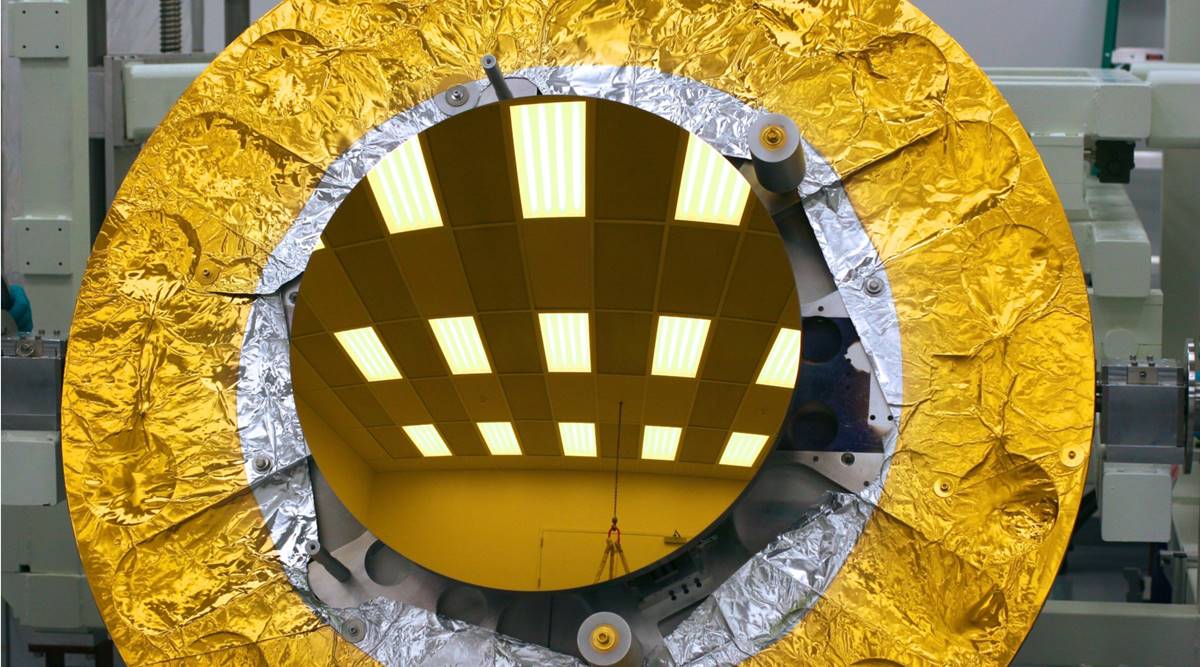 James Webb Space Telescope Secondary Mirror (Ball Aerospace)
James Webb Space Telescope Secondary Mirror (Ball Aerospace) Last night, the James Webb Space Telescope (JWST) successfully deployed its secondary mirror and the support structure. “Another banner day for JWST,” said Bill Ochs, Webb project manager at NASA’s Goddard Space Flight Center, as he congratulated the secondary mirror deployment team at the Mission Operations Center in Baltimore. “This is unbelievable…We’re about 600,000 miles from Earth, and we actually have a telescope.”
Like a latch made in heaven, @NASAWebb’s secondary mirror is now fully deployed and locked!
The team remains focused as they work toward the final major milestone this week – deployment of the iconic honeycomb-shaped mirror. Details: https://t.co/xSRXwCNd8V
#UnfoldTheUniverse pic.twitter.com/dAkMNApb2F— NASA (@NASA) January 5, 2022
The deployment process began at approximately 8:22 pm IST and at approximately 10:53 pm IST, engineers confirmed that the deployment was complete.
“The world’s most sophisticated tripod has deployed,” said Lee Feinberg, optical telescope element manager for Webb at Goddard in a release. “That’s really the way one can think of it. Webb’s secondary mirror had to deploy in microgravity, and in extremely cold temperatures, and it ultimately had to work the first time without error. It also had to deploy, position, and lock itself into place to a tolerance of about one and a half millimeters, and then it has to stay extremely stable while the telescope points to different places in the sky – and that’s all for a secondary mirror support structure that is over seven meters in length.”
Why is the secondary mirror important?
The secondary mirror is the small round convex mirror (0.74 metres in diameter) and is located at the end of long booms. These booms were kept folded during launch. When light hits Webb’s primary mirrors, it will reflect off and hit the smaller secondary mirror. This mirror will then direct the light into the instruments.
Previously, the Webb team had successfully deployed and tensioned the sunshield. It also unlocked the Mid-Infrared Instrument (MIRI) Contamination Control Cover. MIRI’s sensitive detectors will help see the light of distant galaxies and newly forming stars.
Speaking of Webb’s Mid-Infrared Instrument (MIRI), how’s it doing?
We recently unlocked MIRI’s Contamination Control Cover! Here’s how that worked: https://t.co/1zeeAPzHM7 pic.twitter.com/29TTygS4sm
— NASA Webb Telescope (@NASAWebb) January 5, 2022
“To unlock the cover, we first had to power on our Instrument Control Electronics and confirm that they were functioning correctly. The MIRI Contamination Control Cover will be closed in the next few days to protect the optics from any possible contaminants as the observatory cools. It will then be reopened much later in the timeline when MIRI has cooled to its operating temperature of just 7K [-266 degree Celsius] and is ready to look out at the sky,” explained Gillian Wright, European principal investigator for the Mid-Infrared Instrument, UK Astronomy Technology Centre in a release.
- The Indian Express website has been rated GREEN for its credibility and trustworthiness by Newsguard, a global service that rates news sources for their journalistic standards.

